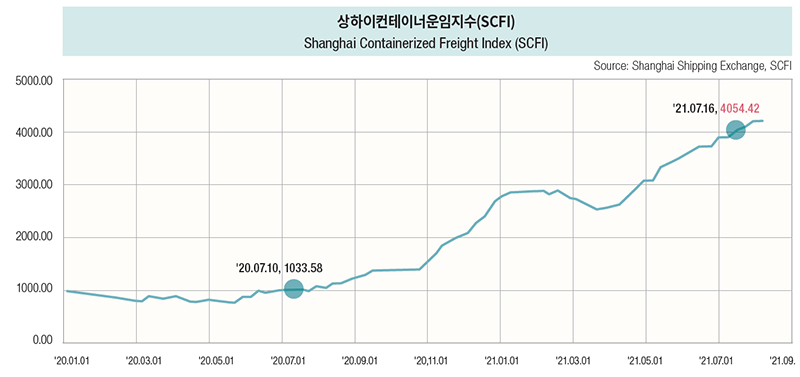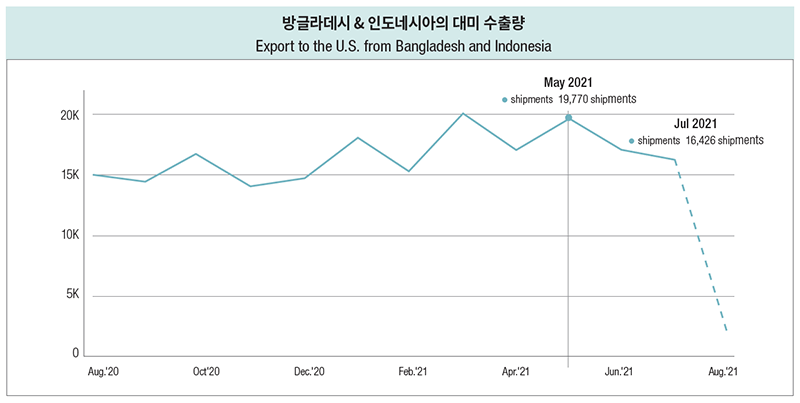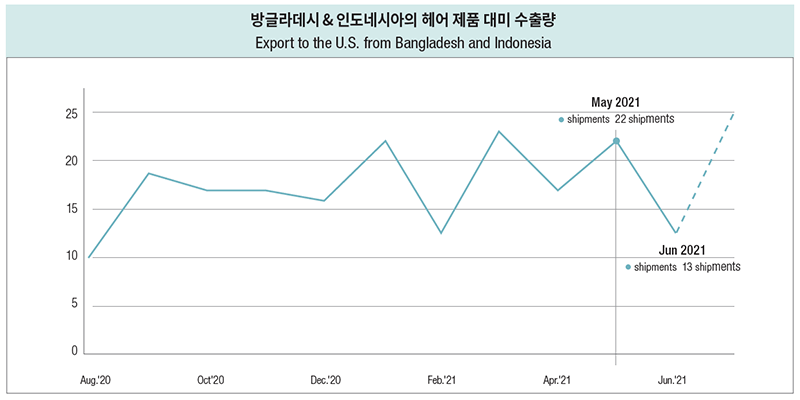Butterfly Effect Caused by Lockdowns in Bangladesh and Indonesia
In 2020, “Lockdown” was declared the word of the year by Collins English Dictionary, citing the government mandated lockdowns imposed worldwide. The use of the same word is on a sharp rise in many countries of Asia today. It’s due to the Delta variant of the coronavirus that started to spread from India to other neighboring countries since last May. A few Asian countries with low vaccination rates are facing a failure of healthcare system, and Indonesia and Bangladesh imposed a large-scale lockdown. These countries happen to host a substantial portion of wig manufacturing facilities in the world. As a flap of a butterfly’s wing causes a tornado in chaos theory, the lockdowns in the two countries may bring about a widespread adverse impact on the hair industry and the global supply chain.
Lockdowns in Bangladesh and Indonesia
In last mid-May, Bangladesh that shares a long strip of border with India reported another wave of Covid-19. Despite lockdown measures imposed on June 5, the spread of Delta variant did not stop, and the Bangladesh government imposed a rigorous total lockdown measure on the first day of July, which shut down all the government and non-government offices as well as the public transportation. Citizens were allowed to leave their home only for essential trips such as shopping for grocery and medical supplies.
The government deployed the military for the enforcement of this lockdown, which was temporarily relaxed for Eid holidays from July 20 to 22, but continued through August 10. On August 11, public transportation and other vehicles were allowed on the road again, and businesses and shops opened, but still unvaccinated citizens over 18 face restrictions on travel. Considering its low vaccination rates of under 6% as of August, Bangladesh may stay locked down for a while.
Indonesia is facing an even harsher reality. Since last June, the Delta variant contributed to average 40k–50k daily-confirmed cases, and daily death counts set record highs for days. It is considered a new epicenter for Covid-19.
Indonesian government imposed Emergency Community Activity Restrictions (PPKM) in Java and Bali islands starting July 3, including mandating work from home for everyone except essential workers, shop closures, and traffic restrictions, and the subsequent measures were taken place in fifteen cities reporting an increasing number of cases including Sumatra, Borneo, and Papua. The measure was relaxed to Level 4 PPKM that allowed operation of small businesses. The Level 4 PPKM initially scheduled for July 26 was extended to August 2 and again to August 9. As of early August, the number of confirmed cases in Indonesia totaled 3.5 million, and its vaccination rate of 8% is below the global average of 14.8%. Moreover, 90% of vaccines used in Indonesia were Chinese-made Sinovac, which has sparked a water vaccine controversy.

Bangladesh Armed Forces enforcing lockdown / Burial ground prepared for Covid-19 victims in a public cemetery in the outskirt of Jakarta, Indonesia
Manufacturing Facilities in Dismay
Indonesia and Bangladesh, currently on a lockdown, used to be global manufacturing powerhouses in the hair industry. For synthetic hair and human hair wig manufacturing, the two countries shared a substantial part, respectively.
Bangladesh government deployed military for a forceful lockdown that reminded of martial law. However, it allowed the industrial facilities and factories to run. When the recovery from last year’s pandemic just commenced, this slightly reserved measure was taken in the face of the fear that a repeat of complete shutdown might lead to irreparable harm to the factories and loss of opportunity. However, the shutdown of public transportation required employees to walk 2-3 km to report to work, which might hempen the productivity.
Indonesia is in the same boat. In the middle of Java islands where restrictions on social activities were imposed, an established industrial strip for hair industry lies in Purbalingga. Dozens of wig factories, eyelash plants, and hairpiece and extension manufacturing facilities stand in a row, for which Korean businesses account for 70%. Almost all of the wigs manufactured in the region are shipped to the U.S. Large manufacturing facilities in Indonesia were recognized as essential businesses during the lockdown, but the raw material and labor shortage due to Covid-19 has led to many difficulties in operation.
One thing after another, the ever-increasing ocean freight charges are heightening the wall between the borders.
The Export Channel, Sea Route Blockage.
Ships transport 90% of global freight. Currently, container shipping rates are setting a high record every day. The underlying cause is the increase of shipment as well as the delay in port processing due to the Covid-19.
Shanghai Containerized Freight Index (SCFI), a widely used index on global freight rates broke through the 4,000 mark for the first time in last July. The same month last year, it stayed in 1,000s, but within less than a year it quadrupled. The number is still on the rise.

Source: Shanghai Shipping Exchange, SCFI
The rise of freight rates is expected to continue for a while. The volume of shipment continues to grow, but underlying problems such as shortage of freight capacity and steep increase in global oil price are only deepening.
Export from Bangladesh and Indonesia to the U.S. Current Status and Forecast
For the past 12 months from August 2020 to August 2021, exports to the U.S. from Bangladesh and Indonesia are shown below. The export steadily increased until this May, and the spread of the Delta variant in two countries reversed the trend.

Export to the U.S. from Bangladesh and Indonesia
*You can use the following HS code to track other hair product such as human hair and synthetic wigs.
HS 6703: HS Codes of Human hair, dressed, thinned, bleached or otherwise worked; wool or other animal hair or other textile materials, prepared for use in making wigs or the like.
HS 6704: Wigs, false beards, eyebrows and eyelashes, switches and the like, of human or animal hair or of textile materials

Export to the U.S. from Bangladesh and Indonesia
The volume of freight shipment drastically decreased around June when the lockdown was imposed. Although the two countries are making effort to spare their manufacturing industry from the lockdown, but the recurrence of Covid-19 outbreaks make it harder to maintain stable output. The waves of Covid-19 and lockdown measures have reached other countries including Vietnam, Thailand, and Cambodia.
We are still very much in for the spread of the Delta variant, so it is too early to predict when the Asian countries can repossess the advantage as a global manufacturing center. Jingyi Pan, Economics Associate Director, IHS Markit in Singapore, pointed out that the supply chain crisis originated in Asia could be a bad sign that can trigger global inflation.
The third quarter marks the beginning of shipment for goods aiming Black Friday and Christmas shopping season, which is the busiest period for container freight transport. Experts predict that the increase in volume and freight ship shortage will lead to the continued increase in container freight rates for the entirety of the third quarter.
The difficulty continues for beauty supply storeowners. They might be soon on a high alert for dwindling inventory after coping with the severe labor shortage during the Covid-19. The supply shortage might last until the end of this year or even through the next year. It is not too late to check your shelves and inventory in preparation.